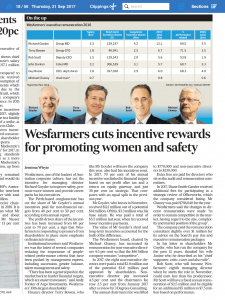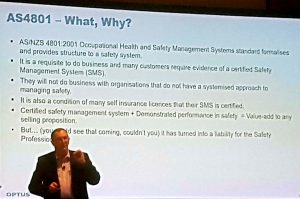 The Queensland Government is in the middle of a debate in Parliament and the media about the introduction of industrial manslaughter as an offence related to serious occupational health and safety (OHS) breaches. It is both a good and a bad time for this debate. The laws are likely to pass but the debate is showing old arguments, weak arguments, political expediency and union-bashing but not a lot about improvement in workplace safety.
The Queensland Government is in the middle of a debate in Parliament and the media about the introduction of industrial manslaughter as an offence related to serious occupational health and safety (OHS) breaches. It is both a good and a bad time for this debate. The laws are likely to pass but the debate is showing old arguments, weak arguments, political expediency and union-bashing but not a lot about improvement in workplace safety.
Timeline
Following two major fatal workplace incidents, in April 2017 the Government established an

 The latest safety management standard
The latest safety management standard  One of the best elements of
One of the best elements of  Today’s issue of the Australian Financial Review (AFR) contained an article that shows that the trend for companies and boards embracing their occupational health and safety (OHS) obligations is not uniform. The article “W
Today’s issue of the Australian Financial Review (AFR) contained an article that shows that the trend for companies and boards embracing their occupational health and safety (OHS) obligations is not uniform. The article “W monwealth. Legislative change has a smooth journey when political stars are aligned, where the same political party is in power at State and Federal levels. Federal change is even smoother when the same political party has control of both houses of Parliament. Not surprisingly, this ultimate combination is rare and could be as damaging to occupational health and safety (OHS) as it can be beneficial. The recent OHS harmonisation process is a good example of a political mess.
monwealth. Legislative change has a smooth journey when political stars are aligned, where the same political party is in power at State and Federal levels. Federal change is even smoother when the same political party has control of both houses of Parliament. Not surprisingly, this ultimate combination is rare and could be as damaging to occupational health and safety (OHS) as it can be beneficial. The recent OHS harmonisation process is a good example of a political mess. Last week Optus’ Director of Work Health and Safety,
Last week Optus’ Director of Work Health and Safety,